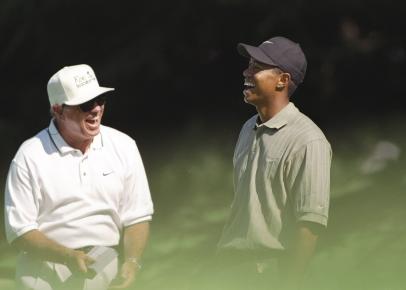the best of the best
Tips and tricks from some of the best teachers in the U.S.
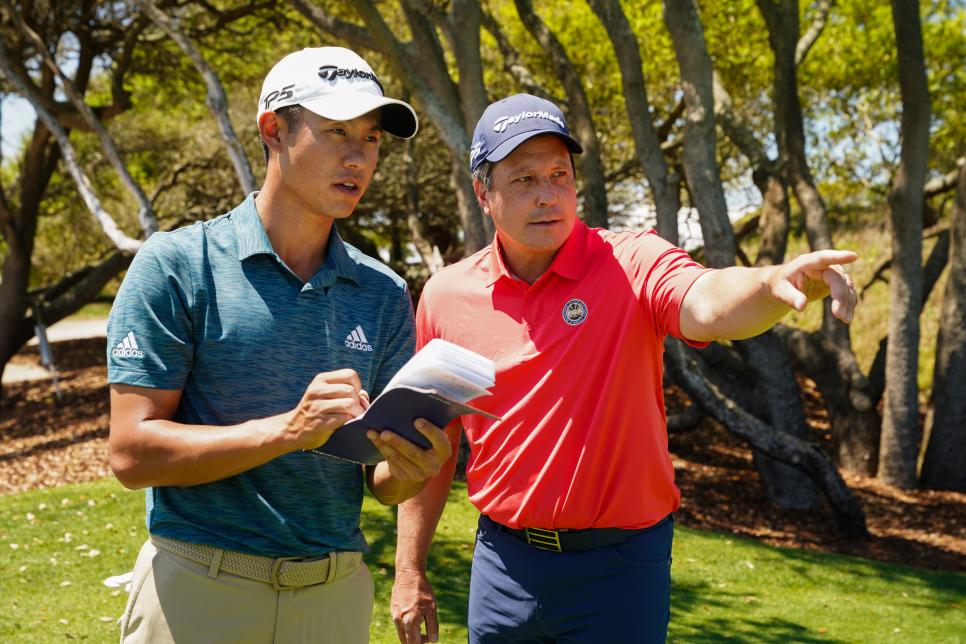
Like most things, technology has had a heavy influence on golf instruction. Gone are the days when teachers would have to rely solely on their eyes and ears to resolve issues their students were experiencing. Those senses have been augmented by a myriad of 21st-century gadgets, including force plates, radar, 3D imaging, etc. With that in mind, we asked a half-dozen teachers who made our Golf Digest 50 Best Teachers in America and Best in State lists to provide some advice for the average golfer based on what they've learned through technological advances. Here's what they told us. —Ron Kaspriske
Train your brain to shoot lower scores
Thanks to advances in electroencephalogram (EEG) technology, we know that athletes perform their best when there is low alpha-brainwave activity. It’s known as the “flow state,” and it greatly helps subdue the parts of your mind that interfere with performance. It accentuates your ability to focus on a specific task, such as splitting a fairway or holing a putt. Flow-state training is part of what I work on with Collin Morikawa and other skilled golfers. The good news is, you can train this way, too—and you don’t need to hook any devices to your head to learn how.
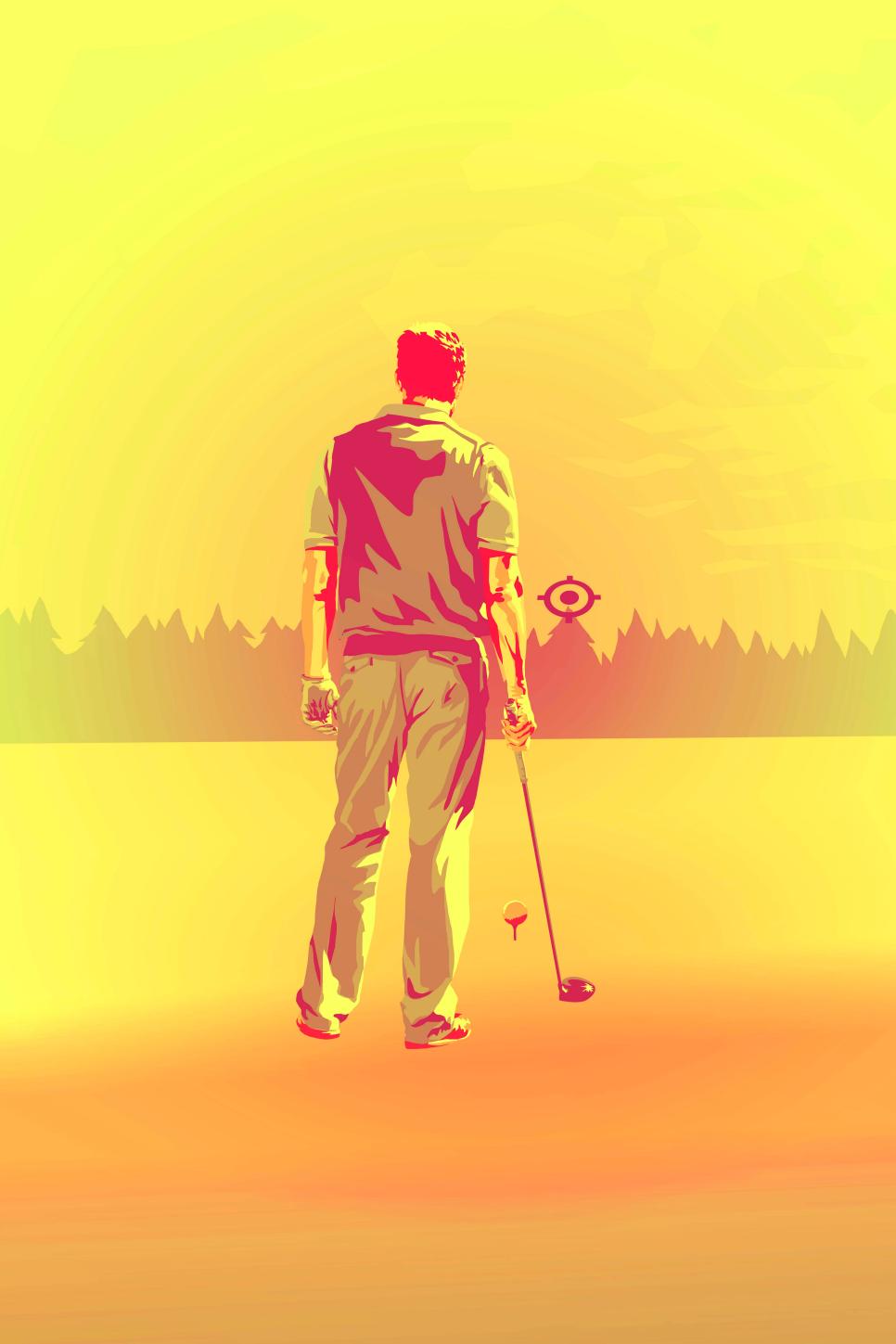
Illustrations by Chris Ede
One of the best ways to lower your brainwave activity is called “expanded awareness.” To tap into it, the next time you’re on the range or out on the golf course, I want you to look out far in the distance at one spot. Pick out the top of a tall tree (right) or a chimney—something specific. While looking only at that spot, inhale for two seconds and then exhale for four seconds. Keep breathing this way, and while you’re still focused on that one spot, allow your vision to expand to 180 degrees. This exercise gets you out of your head and puts you in a calm, focused state where everything seems to slow down and the task becomes much easier to complete. —with Ron Kaspriske
RICK SESSINGHAUS is one of Golf Digest’s 50 Best Teachers in America. His Flowcode Golf Academy is in Burbank, Calif.
Lower your dynamic loft for pure contract
Now that we can measure impact conditions with launch monitors, we’re able to clearly see the difference between the strike of a pro versus that of a typical amateur. One thing that jumps off the screen is the difference in dynamic loft. Think of it as “delivered loft,” meaning the orientation of the clubface as it meets the ball.
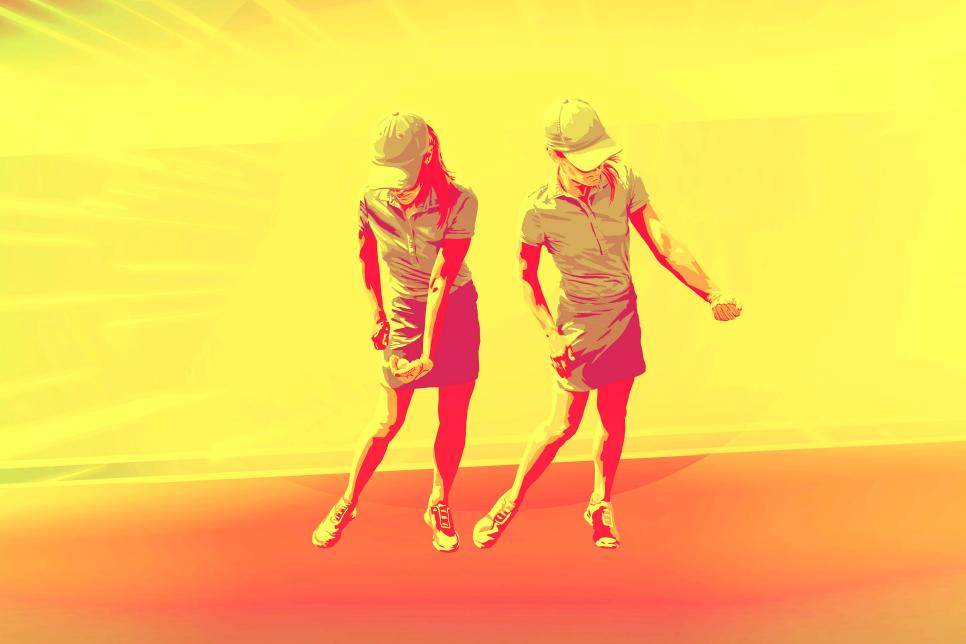
For full iron shots including distance wedges, technology confirms that most amateurs deliver the club with too much loft into impact when compared to skilled players. Many amateurs attempt to scoop the ball off the turf and leave the face open, which leads to poor contact. To hit your iron shots more like a pro—lowering your dynamic loft—close the clubface earlier in your downswing and have the shaft leaning toward the target as the club meets the ball.
To get a feel for this move, cradle a golf ball in your lead hand and mimic a swing. The goal is have your knuckles down as that hand approaches the ball and remain like that into the followthrough (above). If you have the ball “cradled” with your lead wrist bowed, you’ve got the move to lower your impact loft. Re-create that feeling when you go back to hitting shots off the turf. —with Ron Kaspriske
JOANNA COE is one of Golf Digest’s Best Teachers in Pennsylvania. She is director of instruction at Merion Golf Club in Ardmore.
Keep the pressure up on finesse wedges
When hitting touch shots around the greens—chips, pitches, etc.—pressure-plate technology has shown that better players have virtually no weight shift while they swing. Depending on the type of shot, the weight distribution between the feet can be anything from 50-50 to 70-30 (favoring the lead leg), but we don’t see a big shift to the trail side.
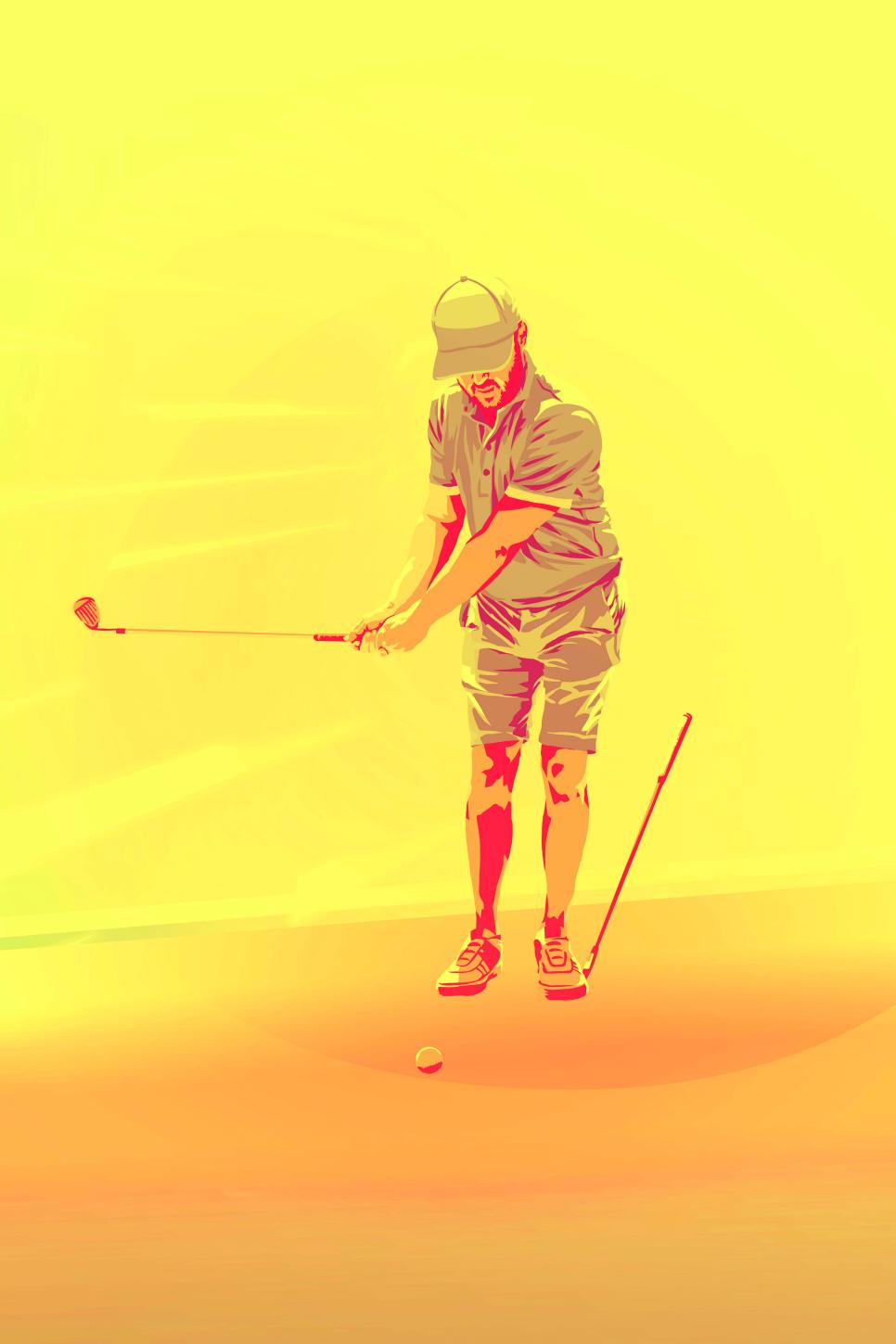
When you shift into your trail leg going back, you put yourself in position to either strike the ground before the ball and blade the shot over the green or hit it fat and short. I’ve got a low-tech way to take this pressure-plate data about weight shift and incorporate it into your finesse-wedge game.
Grab two wedges, one you’re going to hit a shot with and another that you’ll step on with your lead leg so that the face is under your foot and the shaft is behind you and pointing up (above). The goal is to hit shots while maintaining pressure in that lead leg, and you’ll know you’re doing it if the shaft of the wedge you’re standing on stays in about the same position it was at address. You also can do this drill with the wedge under your trail foot. In that case, the goal is to swing without increasing downward pressure on the clubface and causing the shaft to rise. —with Ron Kaspriske
COREY LUNDBERG is one of Golf Digest’s Best Teachers in Texas. He is at Altus Performance in Dallas.
If you miss, miss on the high side
One thing we’ve learned from being able to accurately model putts and breaks over the past 20 years is that overreading a break results in a lot closer miss than if you underread it. For amateurs, this finding is especially important when trying to avoid the dreaded three-putt.

The math tells us that when you underestimate the break, the error is roughly tripled. That means, if you underread your putt by a foot, your ball will miss three feet low—and that’s if your speed was good. If you overread a putt, the miss at the hole is halved. So an overread of one foot will end up only six inches above the hole (above).
Hopefully, the message is clear: When you practice lag putts, keep playing an increasing amount of break until the ball finishes just above the hole. Most amateurs I teach are initially shocked by how much extra break they need to play before the ball starts to finish high. This strategy is the secret to great lag putting. Practice the max amount of break first, and then work on the speed that gets the ball to stop by the hole should you miss. —with Ron Kaspriske
MARK SWEENEY, one of Golf Digest’s 50 Best Teachers in America, is the founder and developer of the AimPoint green-reading system. He is at the Waldorf Astoria Golf Club in Orlando.
Low and slow is not the way to go
I like to say “success leaves clues.” Using the Gears motion-tracking system and studying what the best players do, we’ve found a commonality in most pros’ backswings that might seem contradictory to what you’ve been told to do, but it’s key to sequencing, timing and power generation. High-level players start their swings with a lot of speed early off the ball and then slow down as the club approaches the top. Amateurs, often under the direction of taking the club back “low and slow,” do the opposite. Their takeaway is too deliberate and their transition is too quick. The result is they often lose control of the swing during the change-of-direction phase.
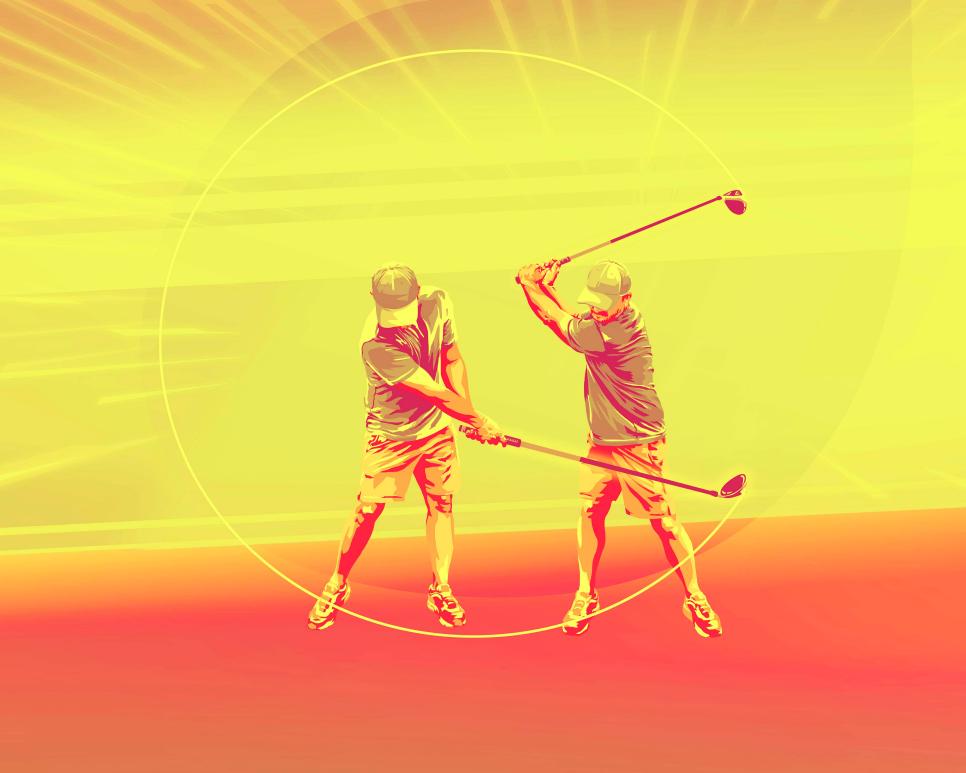
To make your backswing more effective, try this drill: Grab your driver and mimic a follow-through position where the club already has passed impact and your trail foot’s heel is off the ground. This is the new start position for your backswing (above left). Replant your heel and take the club back quicker than you’re used to, but let the speed die as the club approaches the top (left). Work on this move for a bit and when it feels comfortable, expand to making through-swings as a way to complete the task. I think you’ll find this puts newfound energy and flow into your swing and syncs everything up. —with Ron Kaspriske
SHAUN WEBB, one of Golf Digest’s 50 Best Teachers in America, is at Athletic Motion Golf in Winter Garden, Fla.
Check your wrist to see if you should lag the club
Lag is a common term in golf associated with power. If you watch Sergio Garcia swing, for example, you’ll see how far the clubhead “lags” behind his hands well into the downswing. It only catches up at the last second, and that late release helps him hit 300-yard drives. It’s like cracking a whip.
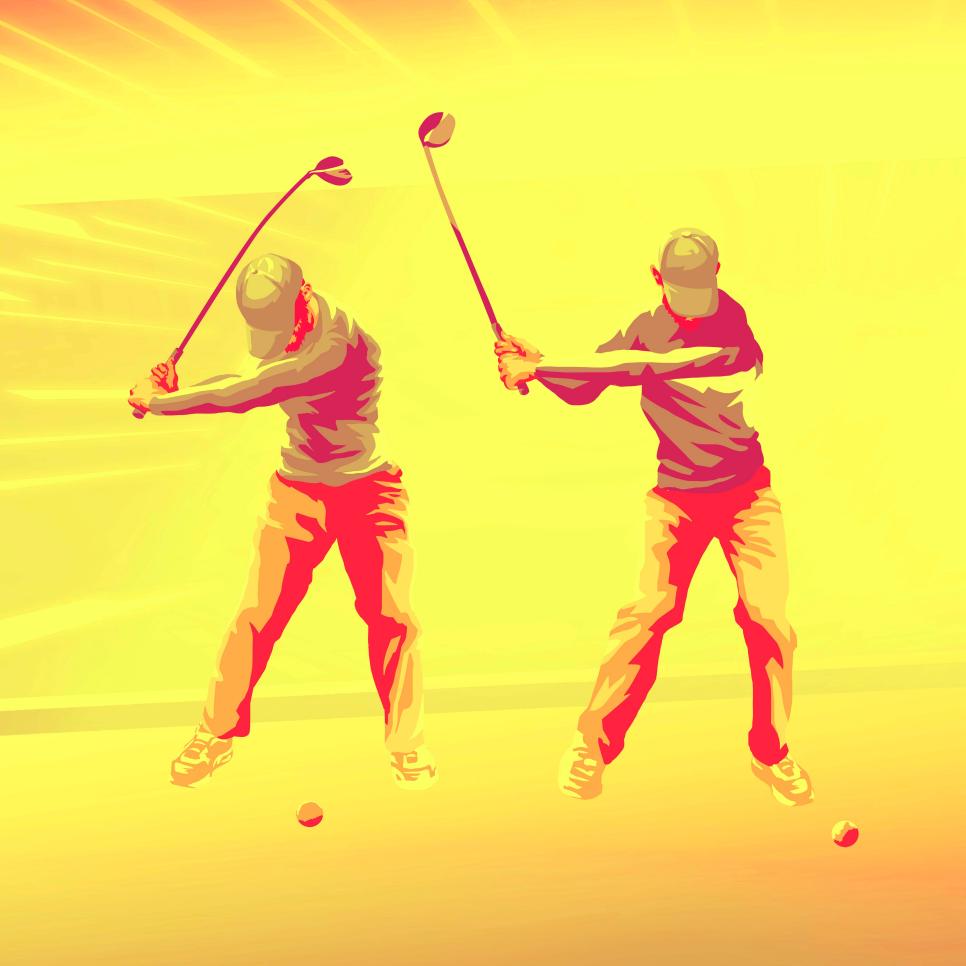
I bring this up because while you might want to copy this move, there’s a good chance you’re not physically able, and trying to maintain lag in the downswing actually could be a power leak. Testing I’ve done using my Full Body Biomechanical model has proven that average golfers struggle to maintain lag. Why? There’s a lack of lateral motion in their lead wrist.
Test yours: Set your hand palm down on a table and try to move it side to side (cock/uncock). If this is easy for you and there’s considerable range, congrats, you’re an outlier and lagging the club in the downswing is recommended for power (above, left). If you can’t move it very much in either direction, which my tests show is the likely outcome, you need to swing down into the ball on a wider path (above, right). Also, expect to have less rotation because of the width and higher moment of inertia of the body. Instead of copying Sergio, think about staying wide as you approach the ball. —with Ron Kaspriske
MICHAEL JACOBS, a Golf Digest 50 Best Teacher in America, founded Jacobs 3D Golf at Rock Hill Golf Club in Manorville, N.Y.
Hope you enjoyed this story! If you have someone who loves golf in your life, there's no better gift this holiday season than Golf Digest+, the ultimate experience on how to play, what to play and where to play your best golf.
